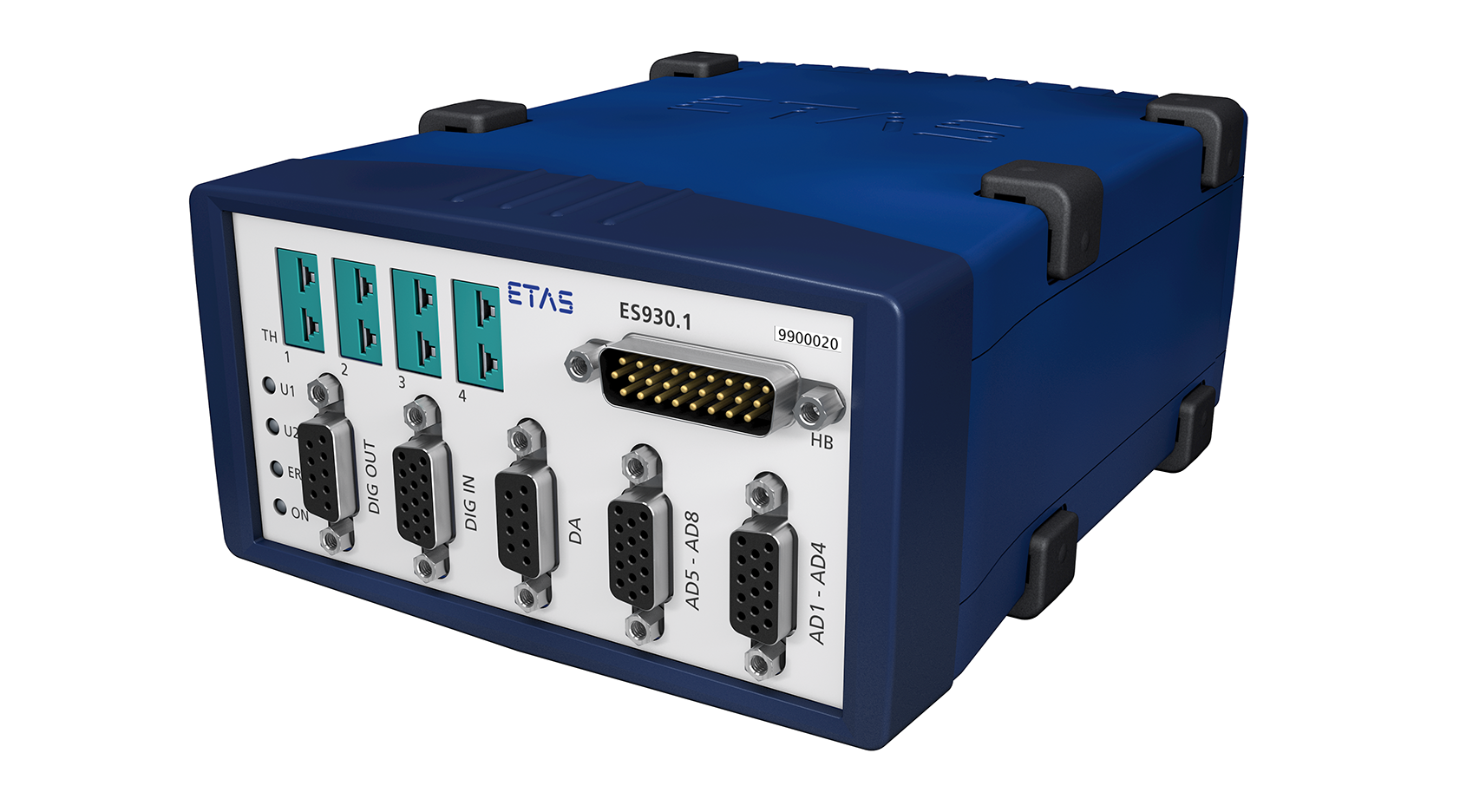Functions

- Multi-I/O- module for prototyping, testing and calibration
- High performance with numerous functions
- 16 different input channels: 4 thermo, 8 analog, 4 digital
- 4 sensor power supplies
- 10 different output channels
- 6 half-bridges with current measurement, controlled by digital outputs
Scope of Services

Altogether, the ETAS ES930 Multi-I/O Module features four thermal inputs, eight analog and four digital inputs. On the output side, the module provides four analog and six digital outputs, six half-bridge-switches with current measurement, as well as four sensor power supplies. All channel settings can be configured for each channel. The number of channels can be extended by connecting several ES930 Multi-I/O Modules in an ETAS Ethernet daisy chain configuration. Additional signal types, such as lambda measurements, can be added effortlessly by means of the ES4xx/ES63x measurement modules. The Ethernet interface allows a performance connection to the function model which is created on the ES910 Prototyping and Interface Module.
The frequently required half-bridges, e.g., for valve or electric motor applications, are integrated in the module, which dispenses with external signal conditioning. A full-bridge (H-bridge) to control electric motors can be realized in this case with two synchronized half-bridges of the module. To drive brushless direct-current motors (BLDC) it is possible to operate three half-bridges with a three-phase center aligned PWM* signal.
A current sense in the output path of the half-bridge sends the current back to the function model as a direct result of the control variable.
The inputs can be operated either in a predefined, equidistant time raster or in an event triggered mode. In event triggered mode, a measured value is transmitted only when a specific event has occurred on a digital input. Such an event, e.g., a falling signal edge, triggers the synchronous measurement of all inputs coupled to this event. In the rapid prototyping module, these event-triggered input signals facilitate the synchronization of the model sequencing to external events.
Combination with other ETAS Products

The ES930 Multi-I/O Module extends the functionality of the ES910 Prototyping and Interface Module, which makes it suitable for controlling and analyzing sensors and actuators directly from within a given function model, including ETAS ASCET, Simulink®, and C code models. Interconnecting the Prototyping and Interface Modules ES910/ES920 with the ES930 Multi-I/O Module opens up a broad spectrum of options for systems requiring access to ETK, XETK, FETK, FlexRay, CAN, and LIN, along with simultaneous access to all current analog and digital I/O-signals.
The ETAS INTECRIO and ASCET-RP rapid prototyping software and the widely used INCA calibration tool support all functions of the ES930 Multi-I/O Module.
* PWM = Pulse width modulation